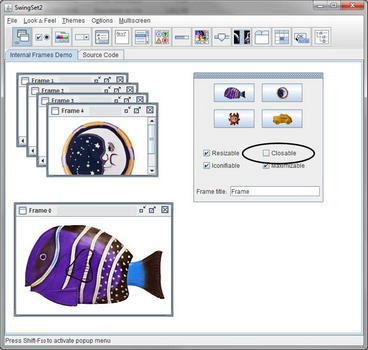Writing Transactions
This example shows how to define a transaction class and write a simple transaction. When writing transactions, make sure that:
•The type is defined (boolean, string, etc.).
•A result is specified. Without a SetResult element, the transaction is not able to end.
•A cleanup function is defined.
•A SetException function is defined, to throw an exception from the Result property. If the transaction fails, an exception is thrown before the timeout period elapses.
public void SetException(Exception ex); |
The following transaction opens a Java application, checks whether a checkbox in the SwingSet main window is selected, and returns a result.
class CheckBoxTransaction : Transaction<bool> { SwingSetMainWindow swingSetMainWindow; private ServiceBase srvc;
public CheckBoxTransaction(ServiceBase srvc, TimeSpan timeout) : base(srvc, timeout) { this.srvc = srvc; this.srvc.WindowOpened += new EventHandler(srvc_WindowOpened); }
void srvc_WindowOpened(object sender, EventArgs e) { try { if (sender is SwingSetMainWindow) { swingSetMainWindow = sender as SwingSetMainWindow; SleepBeforeExecuting(); swingSetMainWindow.cbxResizable.Click(); swingSetMainWindow.cbxClosable.Checked = false; SetResult(swingSetMainWindow.cbxClosable.Checked); } } catch(Exception ex) { SetException(ex); }
|
public void Start() { StartJavaApp(); }
protected override void Cleanup() { srvc.WindowOpened -= new EventHandler(srvc_WindowOpened); swingSetMainWindow.CloseWindow(); } } |
When calling the transaction, you need to call the transaction.Result, so the transaction can end. The following example shows the service implementation of the transaction class defined above:
public void CheckBox() { using (CheckBoxTransaction transaction = new CheckBoxTransaction(service, TimeSpan.FromSeconds(10))) { transaction.Start(); Assert.IsFalse(transaction.Result); } } |

